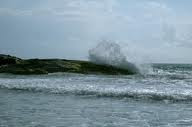DAMs in KANYAKUMARI

Mukkadal dam is built across the Vambaru River, 10 km from Nagercoil. It was built by Sree Chithira Thirunal Balarama Varma in 1945, the King of Travancore. The dam is constructed of clay and granite stones.
DAMs in KANYAKUMARI
Kanyakumari is the southern most district of Tamil Nadu. The district lies between 77o 15' and 77o 36' of the eastern longitudes and 8o 03' and 8o 35' of the northern Latitudes.The District is bound by Tirunelveli District on the North and the east. The South Eastern boundary is the Gulf of Mannar. On the South and the South West, the boundaries are the Indian Ocean and the Arabian Sea. On the West and North West it is bound by Kerala.
A dam is a barrier that impounds water or underground streams. Dams generally serve the primary purpose of retaining water, while other structures such as floodgates or levees (also known as dikes) are used to manage or prevent water flow into specific land regions. Hydropower and pumped-storage hydroelectricity are often used in conjunction with dams to generate electricity. A dam can also be used to collect water or for storage of water which can be evenly distributed between locations.
Dams can be formed by human agency, natural causes, or even by the intervention of wildlife such as beavers. Man-made dams are typically classified according to their size (height), intended purpose or structure.
This dam is in Kalkulam Talk, was built during the days of the Maharaja Sri Moolam Thirunal across the river Kodayar. The construction of the dam was designed on the pattern of the Periyar dam in the Madurai district. The length of the dam is 425.1 mts. It has a catchment area of 204.8 sq.km. There is a camp shed provided at the dam side for the visitors. The weather is very pleasant and hence attracts a large number of tourists.
The reservoir is surrounded by dense forests which are famous for their valuable trees and rich wild life such as tiger, elephants, deer etc. A hill tribe, small in number known as ‘Kanikars’ dwell in the dense forests around the lake .It is a nice place to mingle with the mother nature.
The water from the reservoir is used for both irrigation of crops and for drinking purposes, which has led to conflict between farmers who want to use all the water for their crops, and local authorities, who don't have another place to draw drinking water from, for supply to the urban areas. The dam is surrounded by hills of the Western Ghats, and is a scenic place.
Perunchani Dam is an irrigation dam at Perunchani, about 42 km from Nagercoil, the administrative headquarters-town of Kanyakumari District, and about 10 km from the town of Kulasekhram.
The dam is built across the River Paralayar. It is a straight gravity masonry dam of 373.10 meters long consisting of 275.28 meters of bulk head section. A drainage gallery of 1.52 x 2.29 M has been provided in the middle river section for a length of 45.70 M which serves a longitudinal inspection chamber as well as out-let for the seepages from the foundation. The dam is set amidst the hills of the Western Ghats and commands a picturesque view of the hills and lush greenery around.
c) KODAYAR DAM

Travelling further to the top from Manjolai, we can visit the Kodayar dam. Kodayar dam which is located in the hills is noted for its wild view. The two power houses in Kodayar-Hydro Kodayar Power House I and Kodayar Power House II generates over 100 MW. Kodayar River, with a latitude of 8.33 and a longitude of 77.25 (77° 15' 0 E), is a hydrographic (stream) located in India that is a part of Asia.
It's one of the famous dams in Kanyakumari District. Kodayar are surrounded by dense forests with valuable trees and wildlife constituting elephants, monkeys, porcupine, snakes, wild boars, deer and many birds.Over 42 species of tropical trees are found here. A 100 square kilometer area around Kodayar River has an approximate population of 1092958 (0.01093 persons per square meter) and an average elevation of 66 meters above sea levels
d) MUKKADAL DAM
Mukkadal dam is built across the Vambaru River, 10 km from Nagercoil. It was built by Sree Chithira Thirunal Balarama Varma in 1945, the King of Travancore. The dam is constructed of clay and granite stones.
The depth of water behind the dam is approximately 50 feet. The Mukkadal reservoir supplies water for Nagercoil Municipality, but ironically, not the people living near the dam, and it is also proposed to get water from here for Suchindrum and Kanyakumari. The dam and reservoir are surrounded by hills on three sides. It is a scenic place, favored as a picnic location among local residents.
The forest are highly enhancing with pleasant shoals, hill top forests, beautiful grasslands, panoramic valleys, top hillocks, singing streams, vast stretches of rubber plantations, valuable Teak plantations and excellent climate.
Nobody should miss seeing the enchanted view of this place. A councillor of Nagercoil Municipality Nagarajan said that the Government should take immediate steps to supply potable water to residents of Veeranarayana Mangalam, Thazakudi, Theroor, Kanyakumari and Suchindrum from the dam.
Hence, it was decided to increase the water source of the dam, pumping water from the Ananthanar channel to meet the requirements of Nagercoil, Kanyakumari and Suchindrum residents.
e) CHITTAR DAM
The Chittar Reservoir is built on the Chittar River. This river and its five tributaries originate in the Courtallam hills in the state of Tamil Nadu in southern India. The Chittar Reservoir serves as an important source of irrigation for the region. The Chitter Reservoir is a well-known tourist spot, owing to its superb views, breathtaking scene of waterfalls and cascades. The Chittar Reservoir irrigates almost8,903.27 hectares of land.
The Chittar runs for about 80 km before it meets with its first tributary which has an anicut and irrigates about293.40 hectares of land. One of its next tributaries has a reservoir provided by an anicut, feeding 141.64hectares.The next tributary has seven anicuts and a reservoir and irrigates 465.39 hectares of land altogether. This pattern continues as each tributary and other contributing rivers has anicuts and reservoirs that provide irrigation for the adjacent land. There are two dams at Chittar:
The Chittar runs for about 80 km before it meets with its first tributary which has an anicut and irrigates about293.40 hectares of land. One of its next tributaries has a reservoir provided by an anicut, feeding 141.64hectares.The next tributary has seven anicuts and a reservoir and irrigates 465.39 hectares of land altogether. This pattern continues as each tributary and other contributing rivers has anicuts and reservoirs that provide irrigation for the adjacent land. There are two dams at Chittar:
The road from Pechiparai to Chittar-1has plenty of sights to offer. Chittar-1 is the smaller of the two. The low wall of the dam abuts the road. Chittar-2. There was this particular stretch of road, very narrow, that cut across through rubber estates on either side.
Had here been a fog, it would've looked really spooky; and really romantic. The dam here is much larger. t was a most beautiful spectacle. The lake, the mountains and the clouds played visual accomplice, while the breeze robbed us of all the reserve in our manner.
Along the dam, intoxicated by the sheer charisma of the place. At the other end of the dam, there is a dead tree that stands out on the edge of the lake. A round boat was drawn up to the shore near the tree.
A herd of plump goats grazing in the grass nearby stared at us in pure astonishment, as though wondering what in the name ofChittar's-Greenest-Grass were these two human beings doing in this part of the world! The Chittar River itself has 17 anicuts irrigating8,903.27 hectares of land. It eventually joins with Thamirabarani river.
f) POIGAI DAM
The laying of gravel road near Poigai dam by a private party to approach the place where they are planning to set up a cancer centre at an estimated cost of Rs.1.50 crore reportedly poses a threat to the safety of the dam.
According to sources, environmentalists, office bearers of Green Revolution Farmers' Association, Thovalai Taluk Consumer Protection Centre and Consumer Protection Association of Kanyakumari District and the local people have expressed their concern over the laying of road in the prohibited area.
The president of the Consumer Protection Association, S. R. Sree Ram, said that a private trust known as Kanyakumari Institute of Oncology Research and Technology has decided to set up a cancer and research centre in a phased manner at the western side of Poigai dam on 2.50 acres of patta land.
Later it was known that more than 10 acres of land belonging to forest department had been occupied. As there was no proper path to reach the proposed area, the trust had encroached upon the hills and catchment areas of Poigai dam and laid a 100-feet-wide gravel road to a length of one km.
Even though the rules and regulations prohibited any development work within 100 metres from the dam site, they had laid the gravel road very close to the dam.
Moreover as it was the catchment area and amid hills and lush green paddy fields, destroying the hills was an offence. No permission from any department for the laying of road was obtained.
However permission was got from Chenbagaramanputhoor village panchayat for setting up cancer centre. The president of Green Revolution Farmers Association,
Arumugham said that the move was highly condemnable and the district administration should come forward to stop such activities as it posed threat to the environment. For laying the road, inlets of the Poigai dam had been closed by dumping of gravel.
Officials of various departments visited the site and asked the private party to stop work temporarily.
It was known that owing to the opposition from the people belonging to all walks of life, president of Chenbagaramputhoor S. Kalyana Sundaram reportedly withdrew the earlier order granting permission to set up cancer centre as they had not got proper permission from officials and did not get clearance from Hill Area Conservation Authority. This was a protected area as there were lots of deer and other animals.
The Government has allotted a sum of Rs.76 lakh for the development of Poigaiyaru reservoir in the district recently. The farmers depended on water from this dam to undertake cultivation of800 acres of agriculture land in and around Chenbagaramanputhur.
Subscribe to:
Post Comments
(
Atom
)


















Nice post. I was checking constantly this blog and I'm impressed! Very helpful info specially the last part :) I care for such info a lot. I was seeking this certain info for a long time. Thank you and best of luck.
ReplyDeleteINA Engine Timing Chain Tensioner